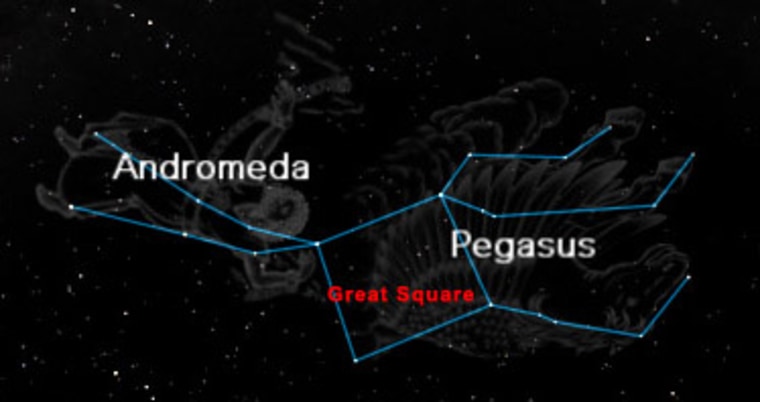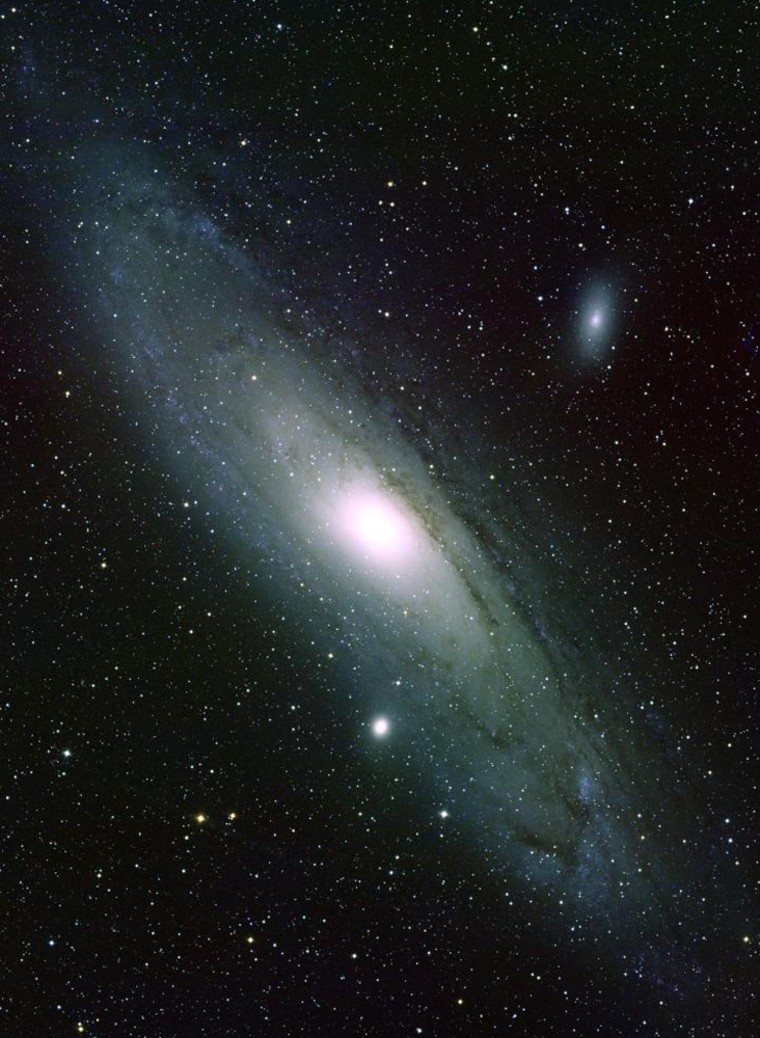Although winter officially begins Tuesday at 7:40 a.m. ET, one of the landmarks of the autumn sky is still readily visible, high toward the south around 7 p.m. local time.
It’s the Great Square of Pegasus, the Winged Horse, an unmistakable star pattern, even though it is slightly battered out of true square shape. Nonetheless, it’s a striking figure, and once you know it you won’t forget it.
Interestingly, one of the stars in the Square — Alpheratz — actually belongs officially to the princess Andromeda. Andromeda, according to legend, should be chained to a rock. Instead she seems to have become chained to the horse: a double strand of stars — one strand bright, the other dim — connected to the upper left corner of the square.
About midway and above these star strands is the Andromeda Galaxy, lies one of the most amazing and fascinating of sky objects. In the year 905, the Persian astronomer Al Sufi drew attention amidst the stars of Andromeda to a "Little Cloud," and it appeared on star charts long before the telescope was invented in 1609. If the sky is clear and moonless, you can indeed see an elongated hazy patch with your unaided eye about as long as the width of the full moon and half as wide.
Through binoculars and telescopes, it remains an elongated patch which gradually brightens in the center to a starlike nucleus. It was listed as object No. 31 in Charles Messier’s 18th-century catalog of nebulae, which is why it is known as Messier 31 or M31.
The best way to positively identify the Andromeda Galaxy is to focus your eyes or binoculars on Alpheratz. Run straight across to the left and get the star Mirach in your field of view.
Then run slowly upward to a fairly bright star above Mirach, and continue to run up in roughly the same direction and same distance. You’ll immediately take note of a little patch of faint light.
Congratulations! You’ve found Messier 31.

Please forgive this patch of light for being so faint and tired-looking. You will when you realize that, as you see it tonight, this light has been traveling 2.5 million years to reach you (give or take a few hundred thousand years) — traveling all that time at the tremendous velocity of 671 million mph.
The light you are seeing is around 25,000 centuries old. When it began its nearly 15-quintillion-mile journey earthward, mastodons and saber-toothed tigers roamed over much of pre-Ice Age North America, and prehistoric humans struggled for existence in what is now the Olduvai Gorge of East Africa.
In 1924, Edwin Hubble (1889-1953) and Milton Humason, using the 100-inch reflecting Telescope at Mount Wilson Observatory, became the first people to resolve M31 into individual stars.
We know today that this "little cloud" is actually a spiral-shaped aggregation of more than 300 billion stars like our own Milky Way galaxy. This great island universe is the nearest of all the spiral galaxies and one of the largest known.
